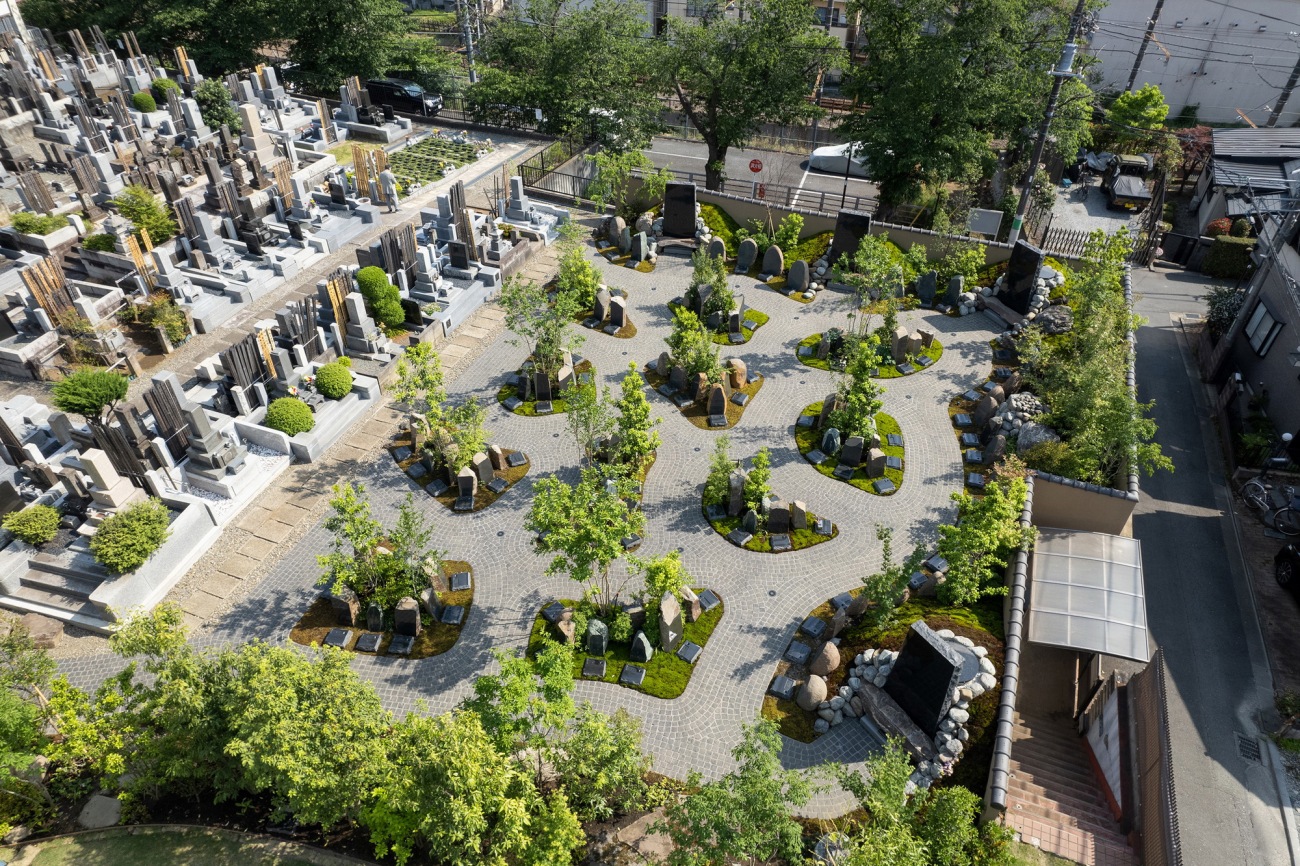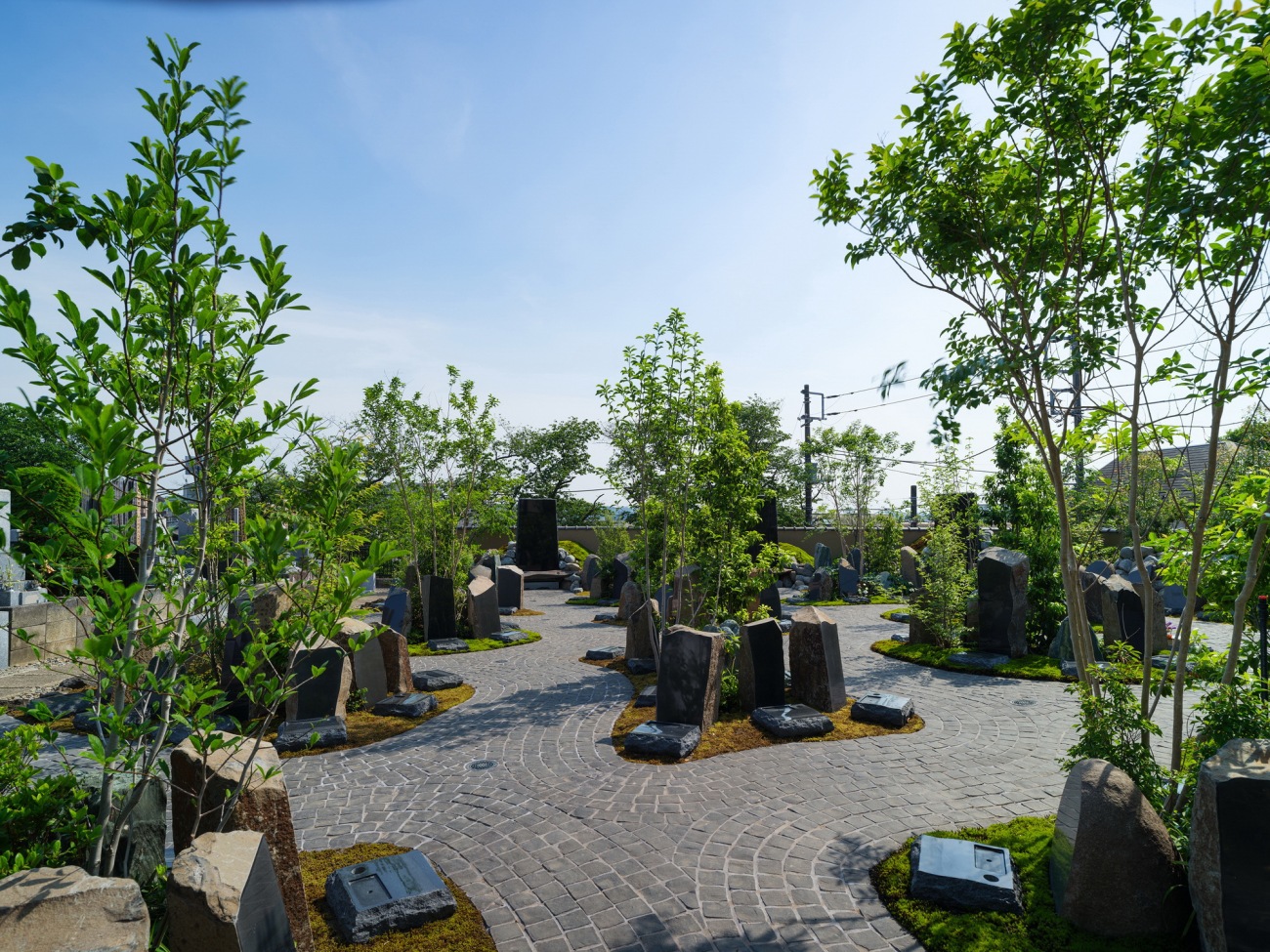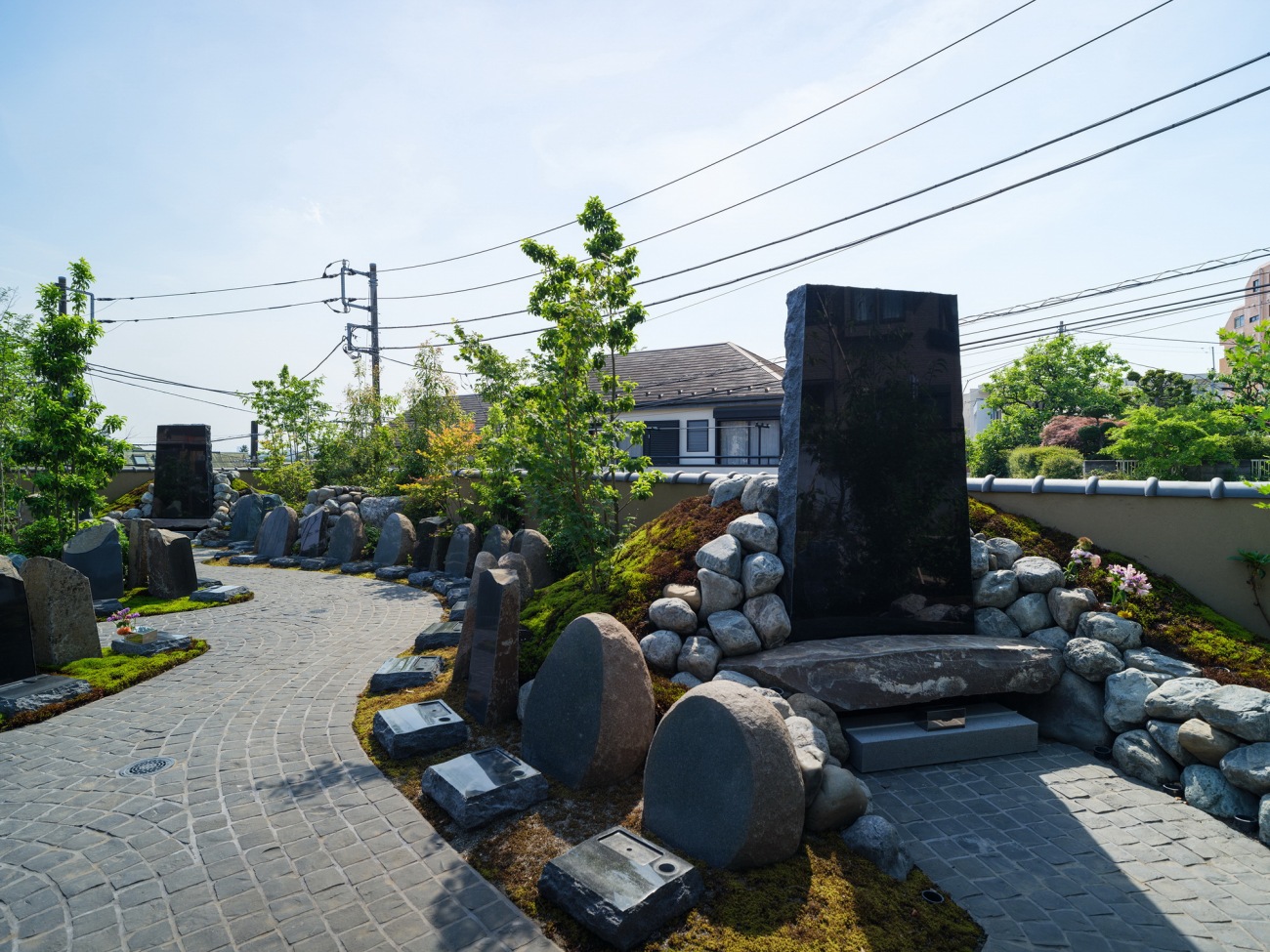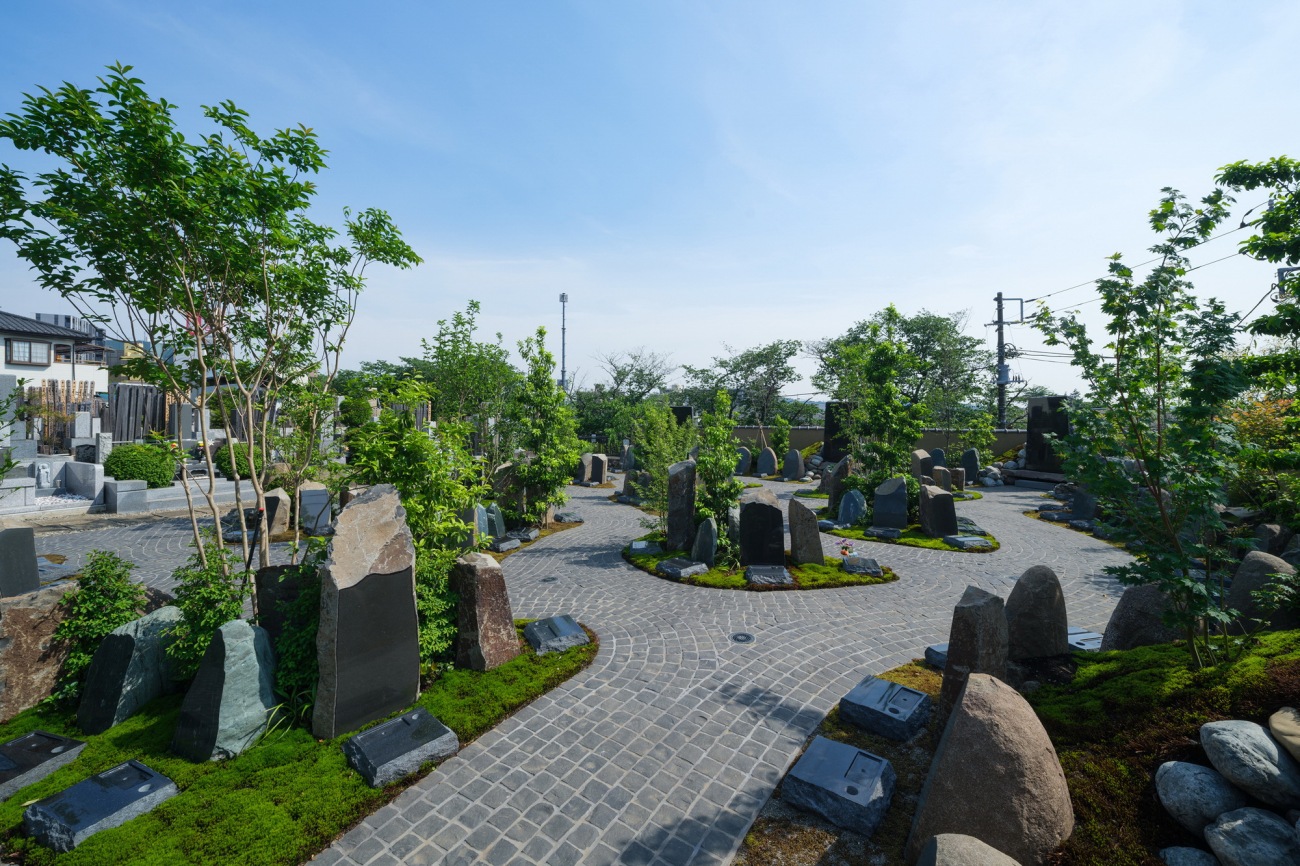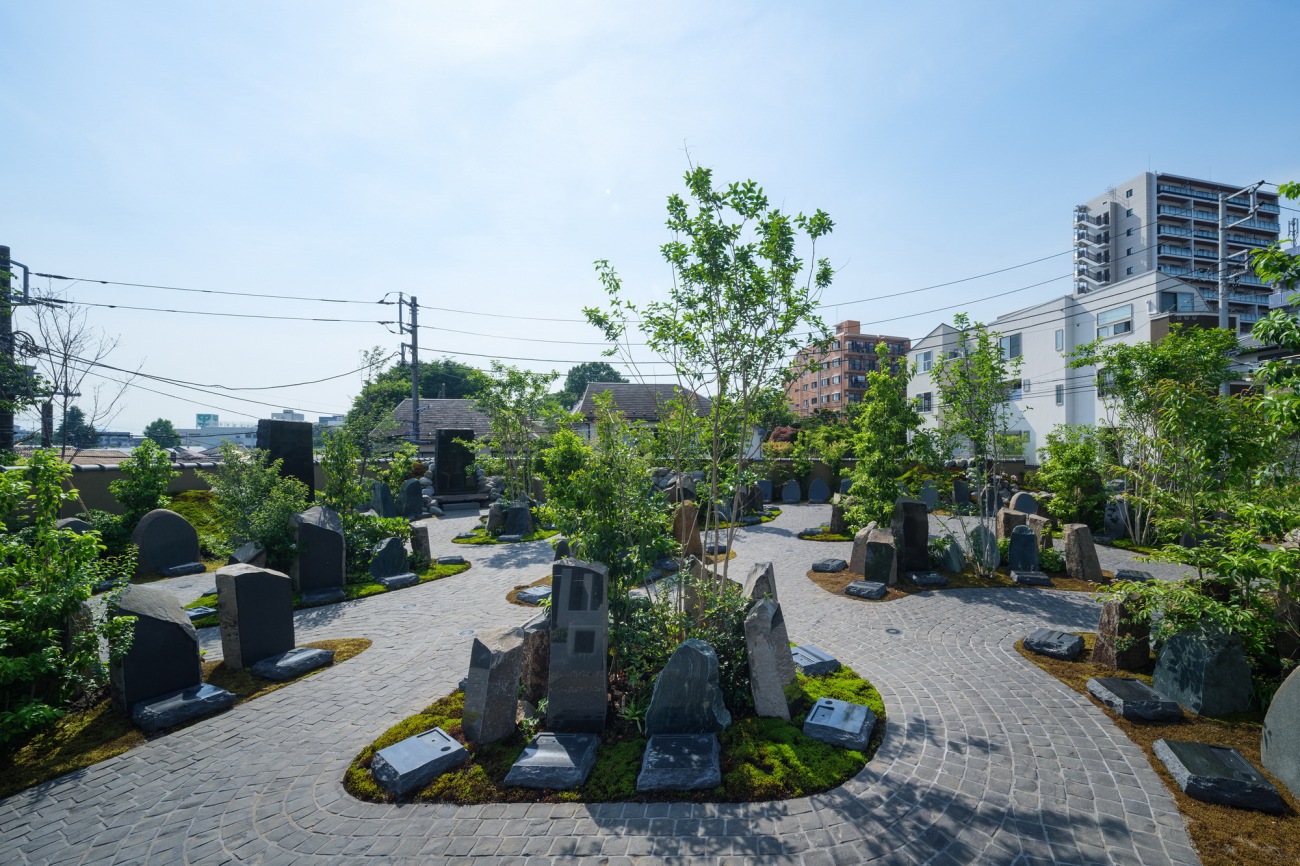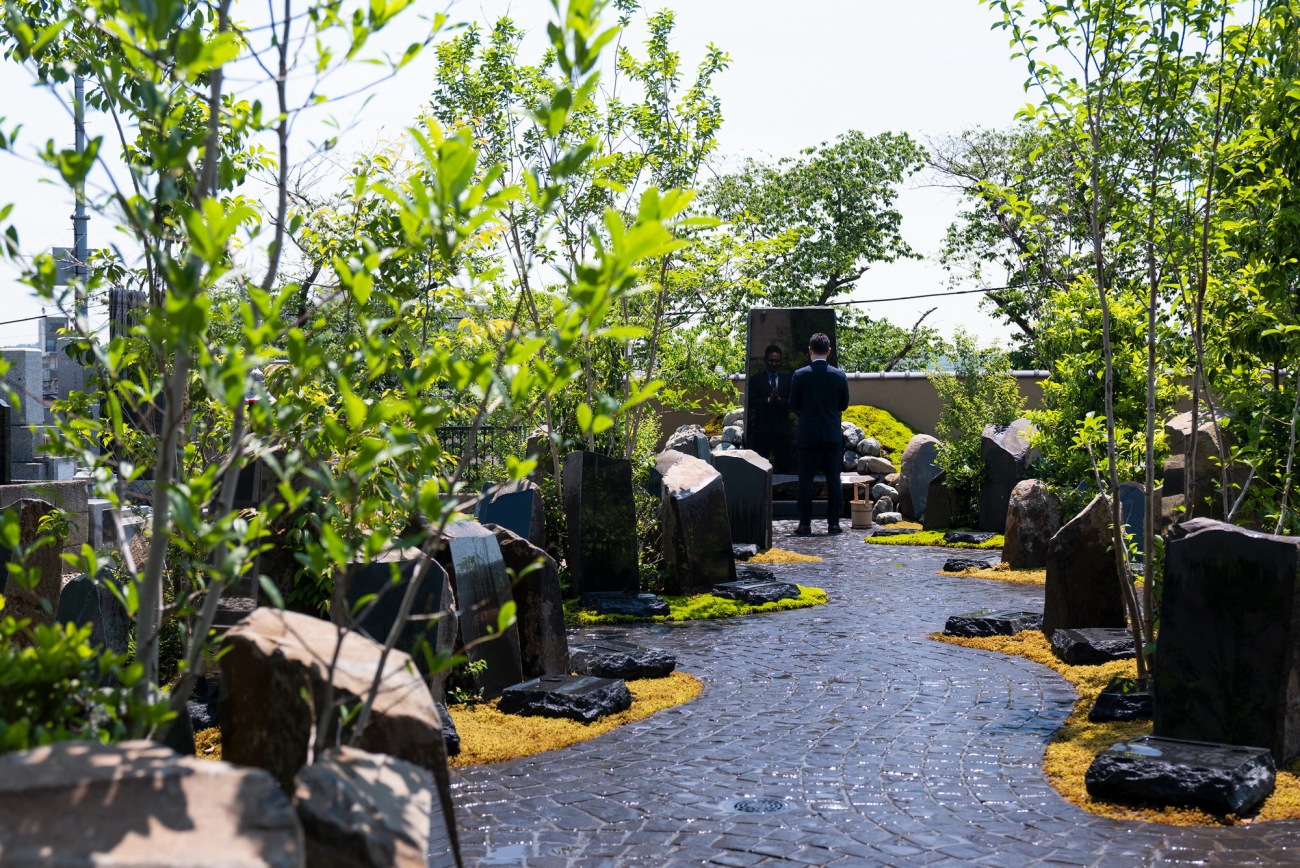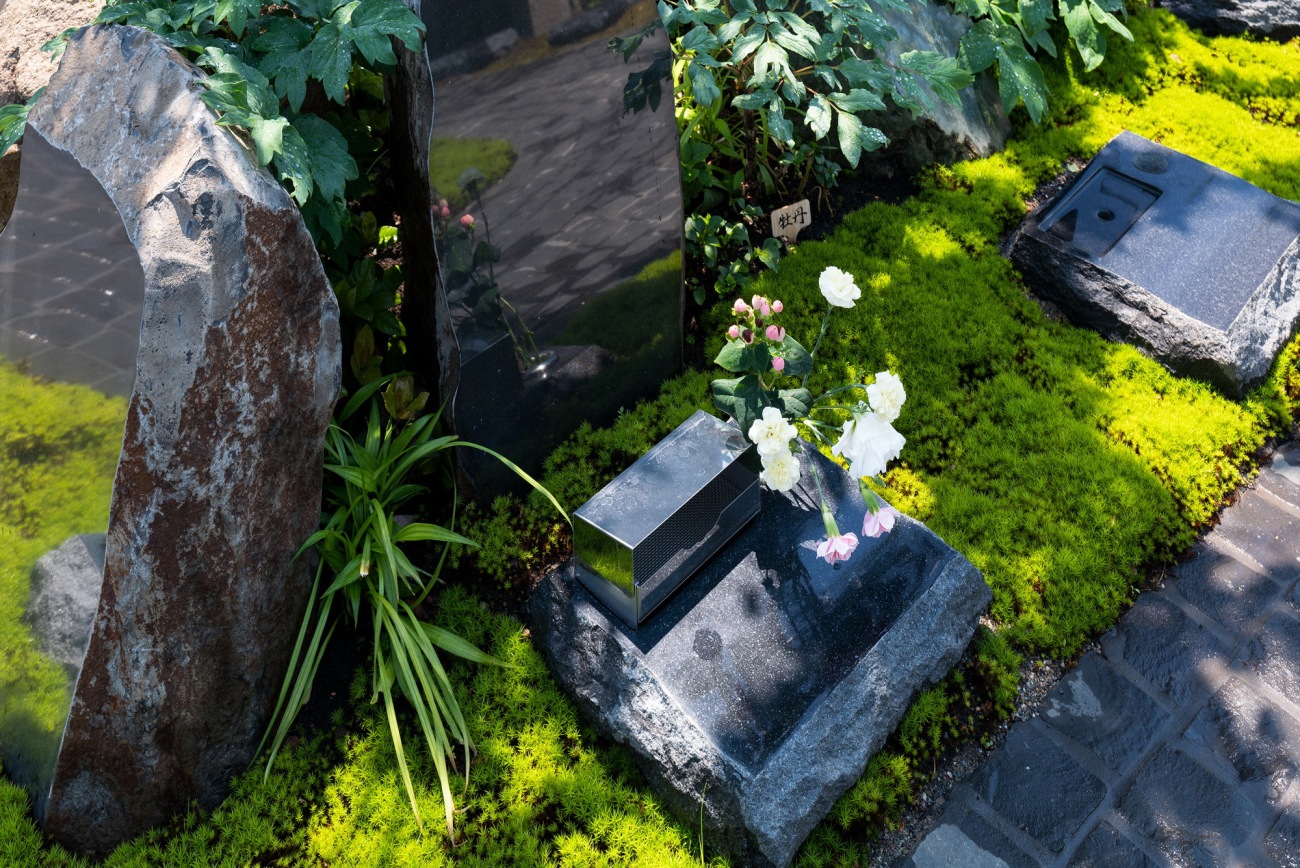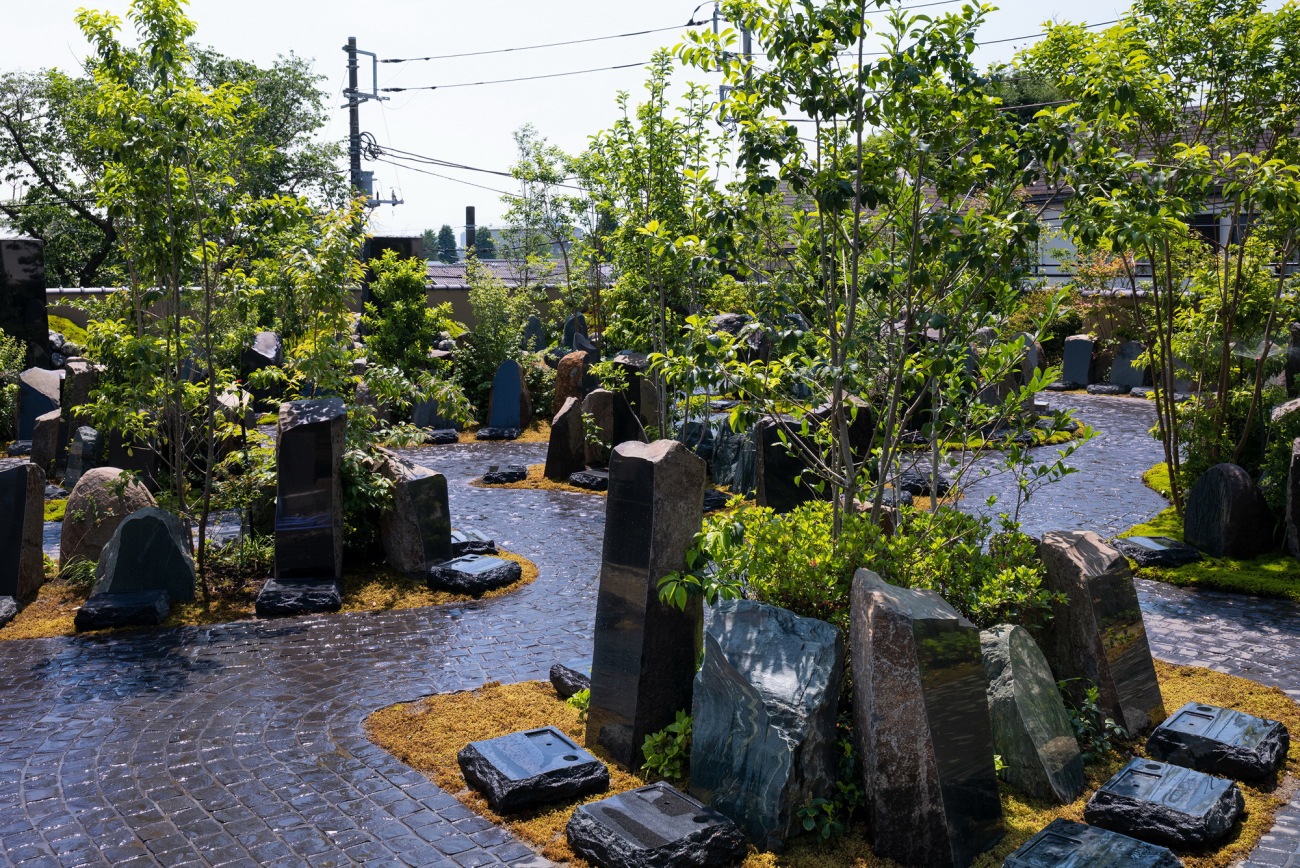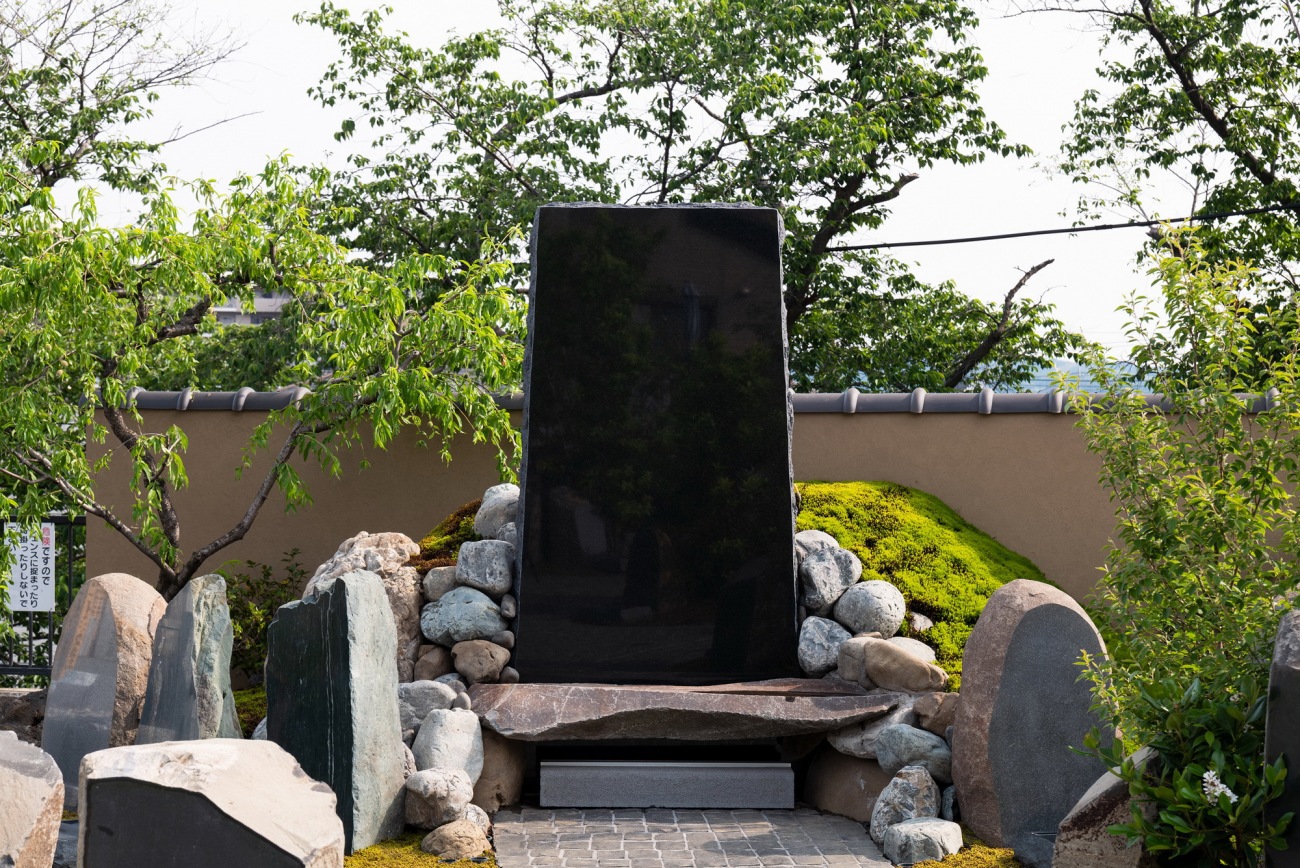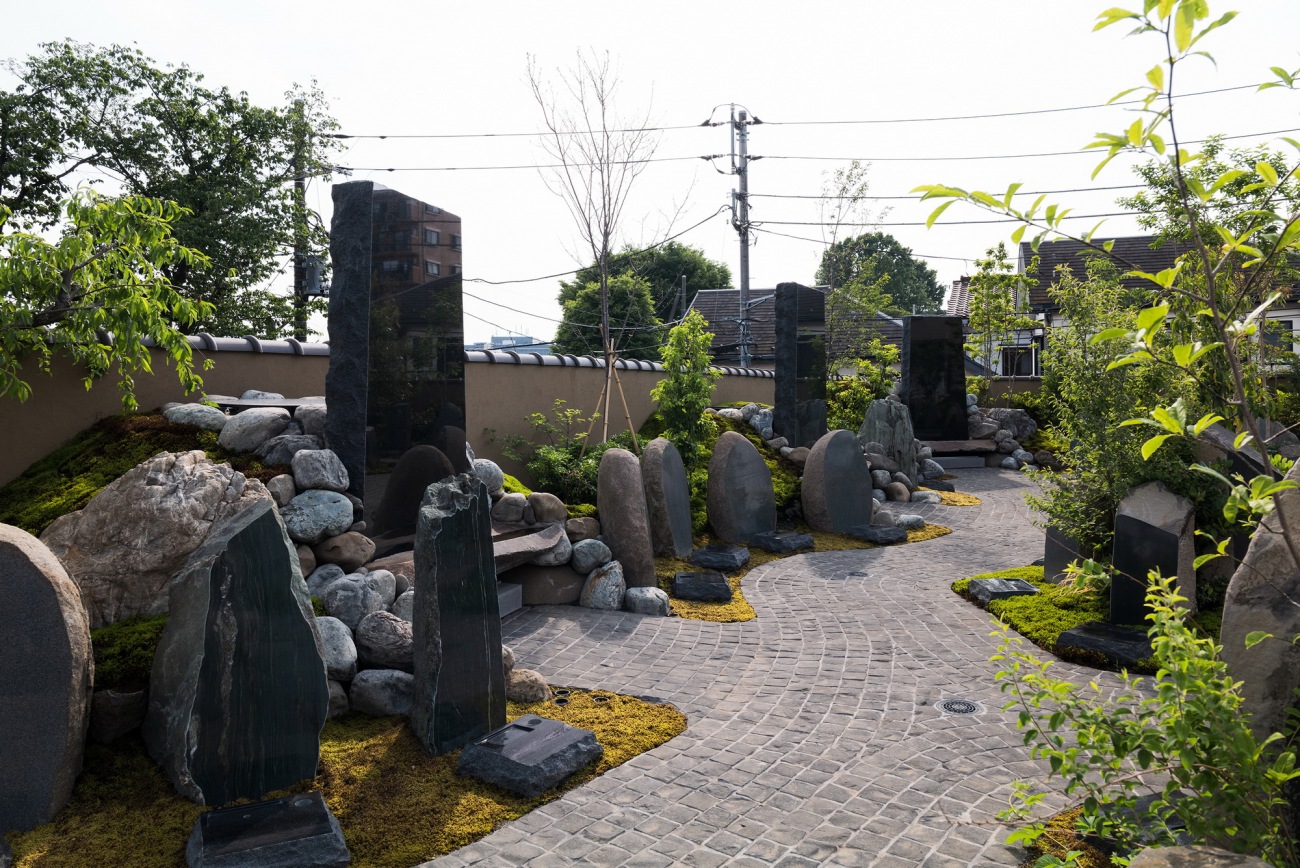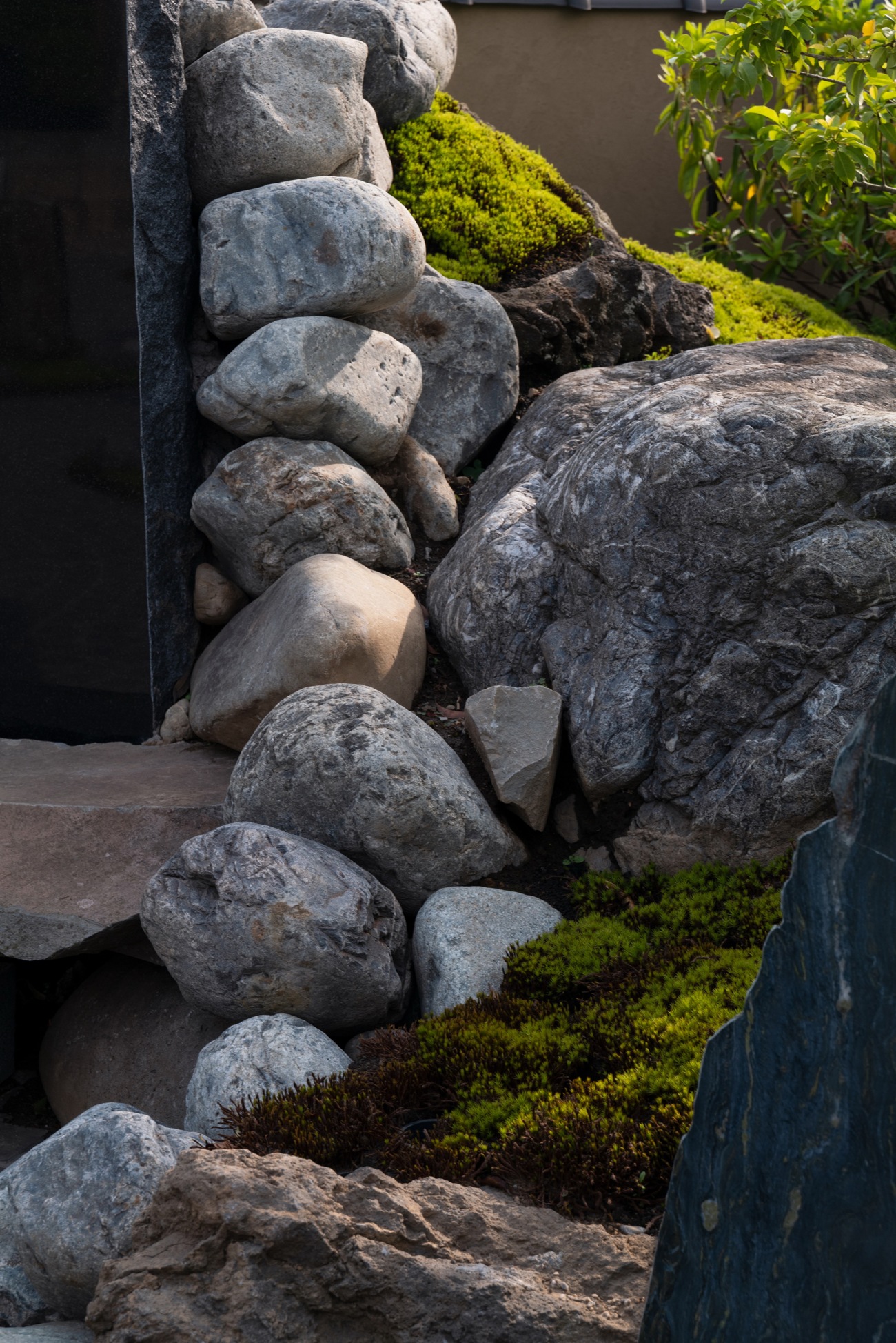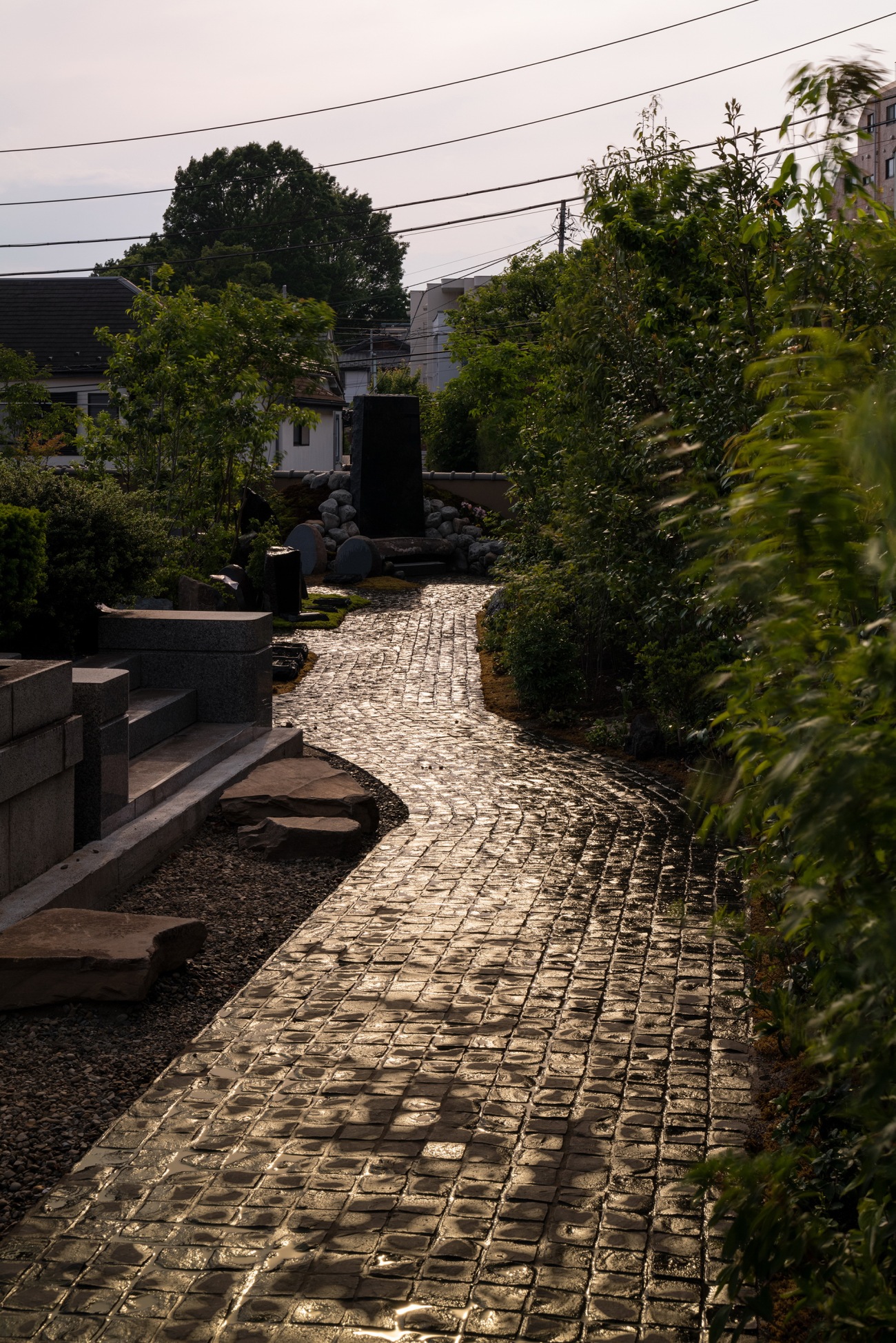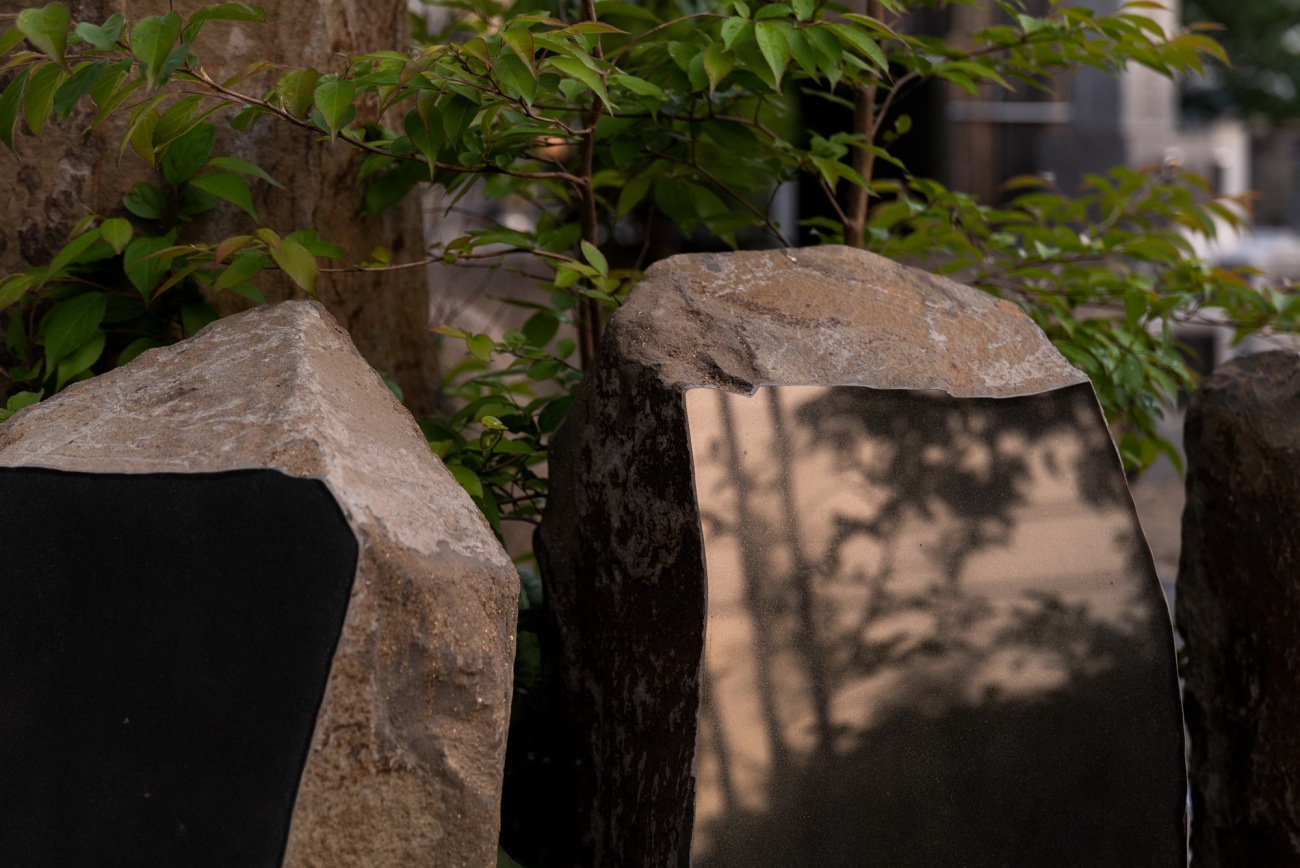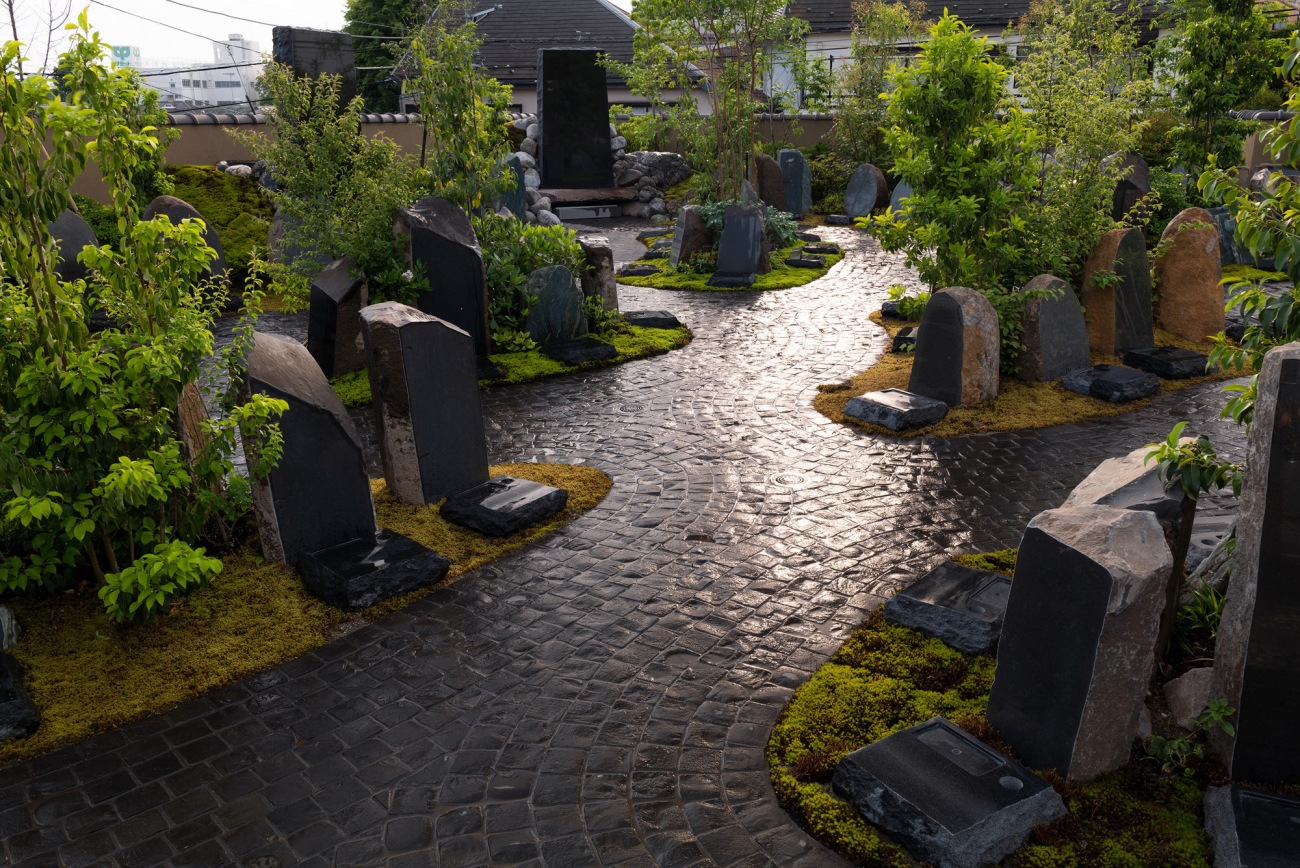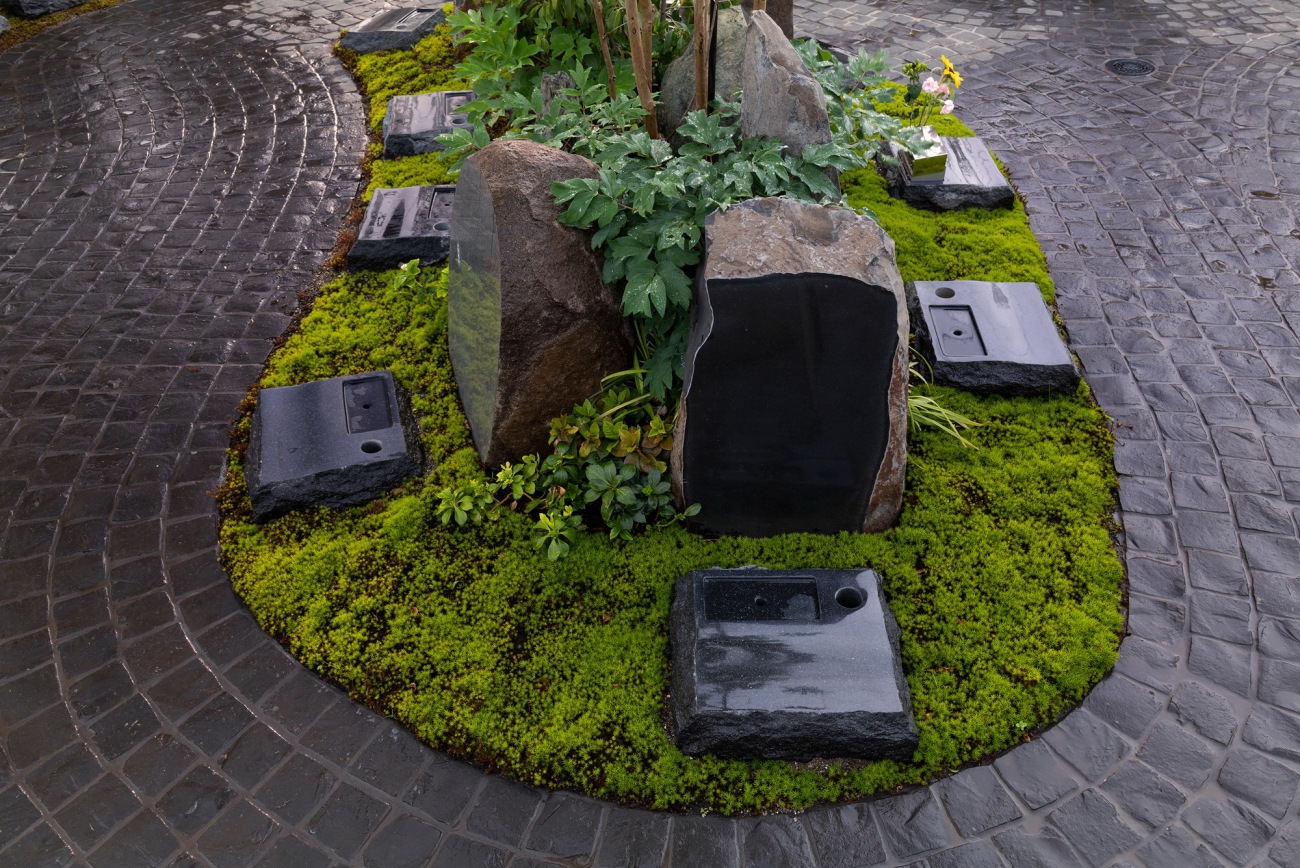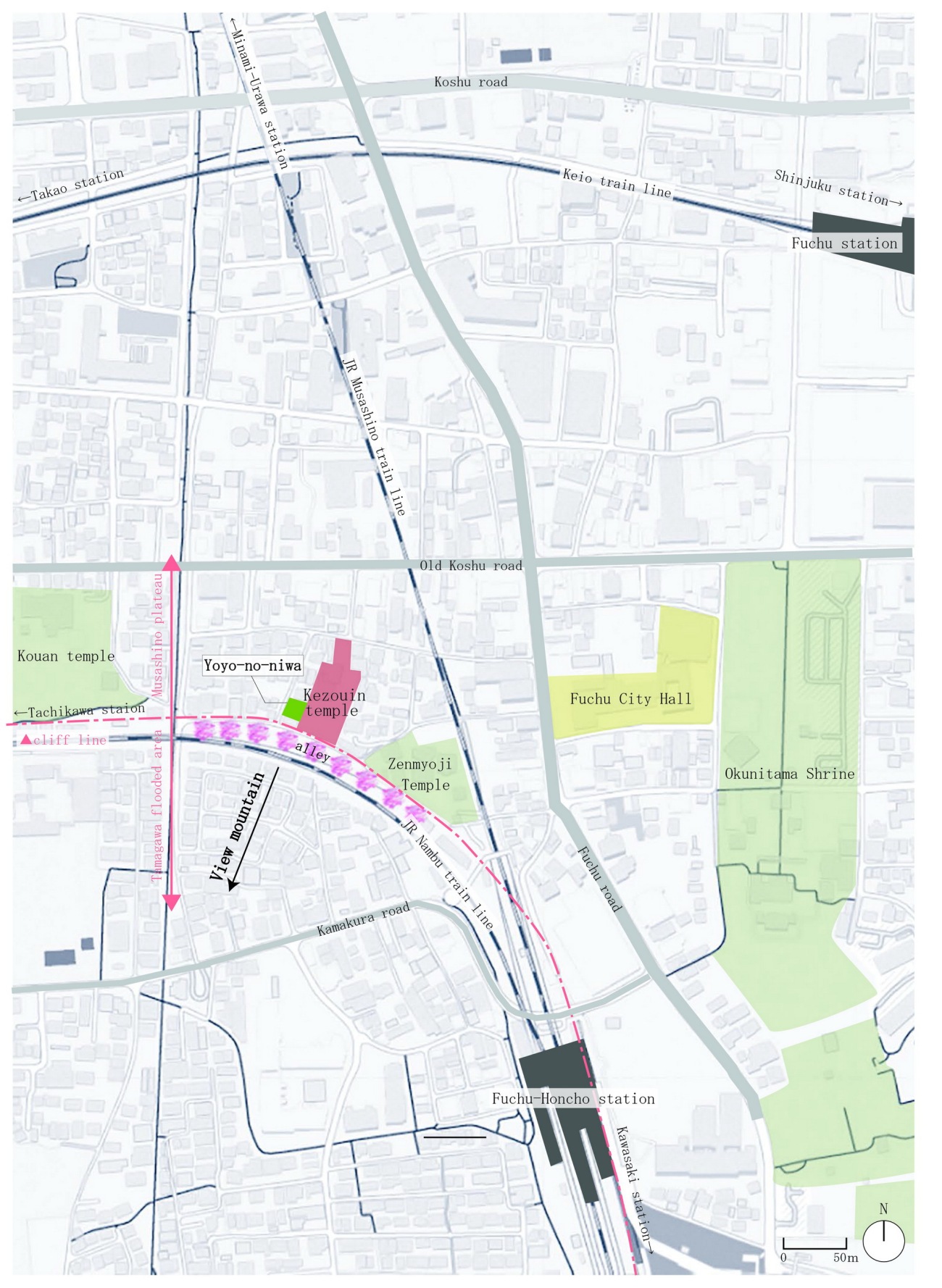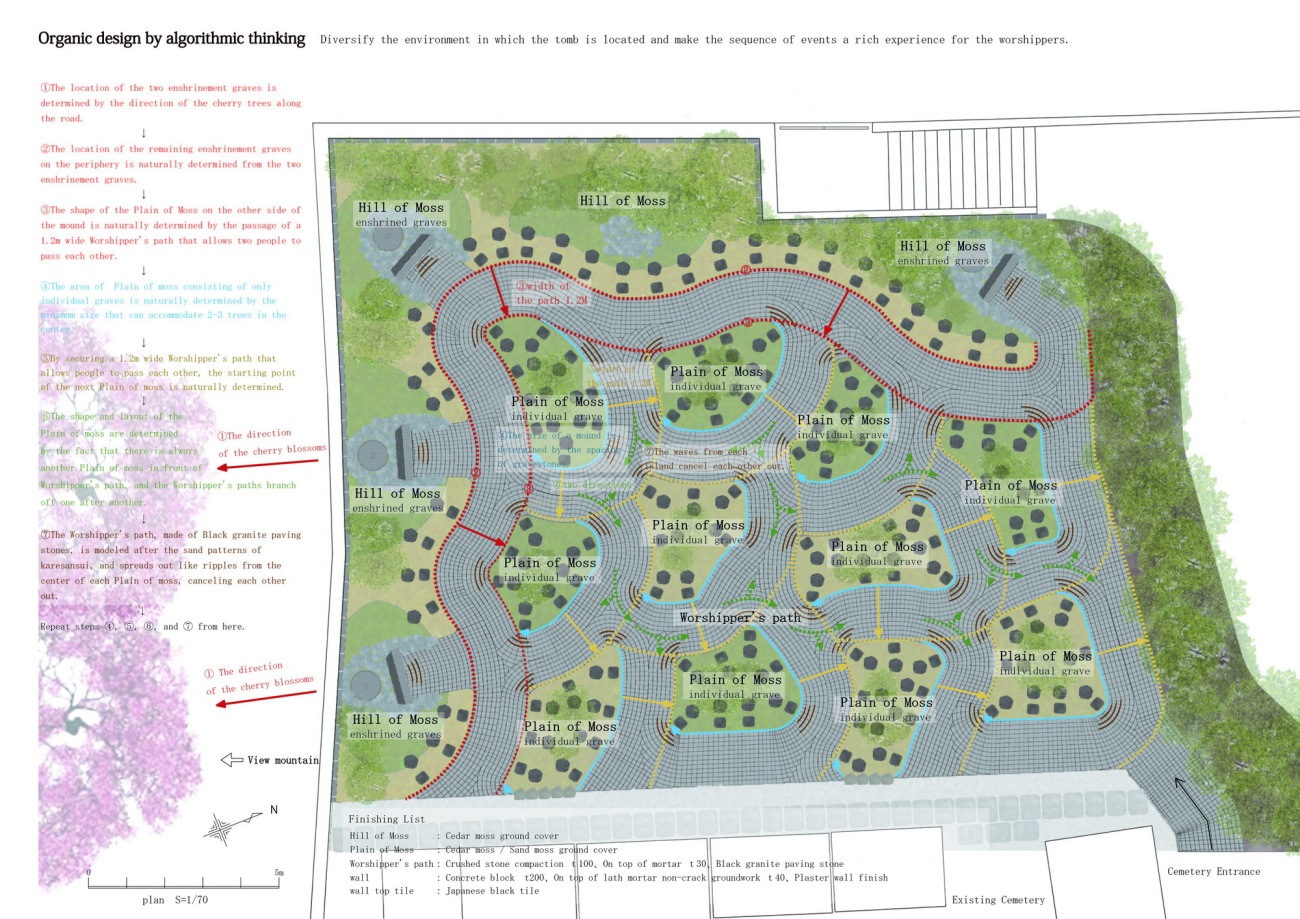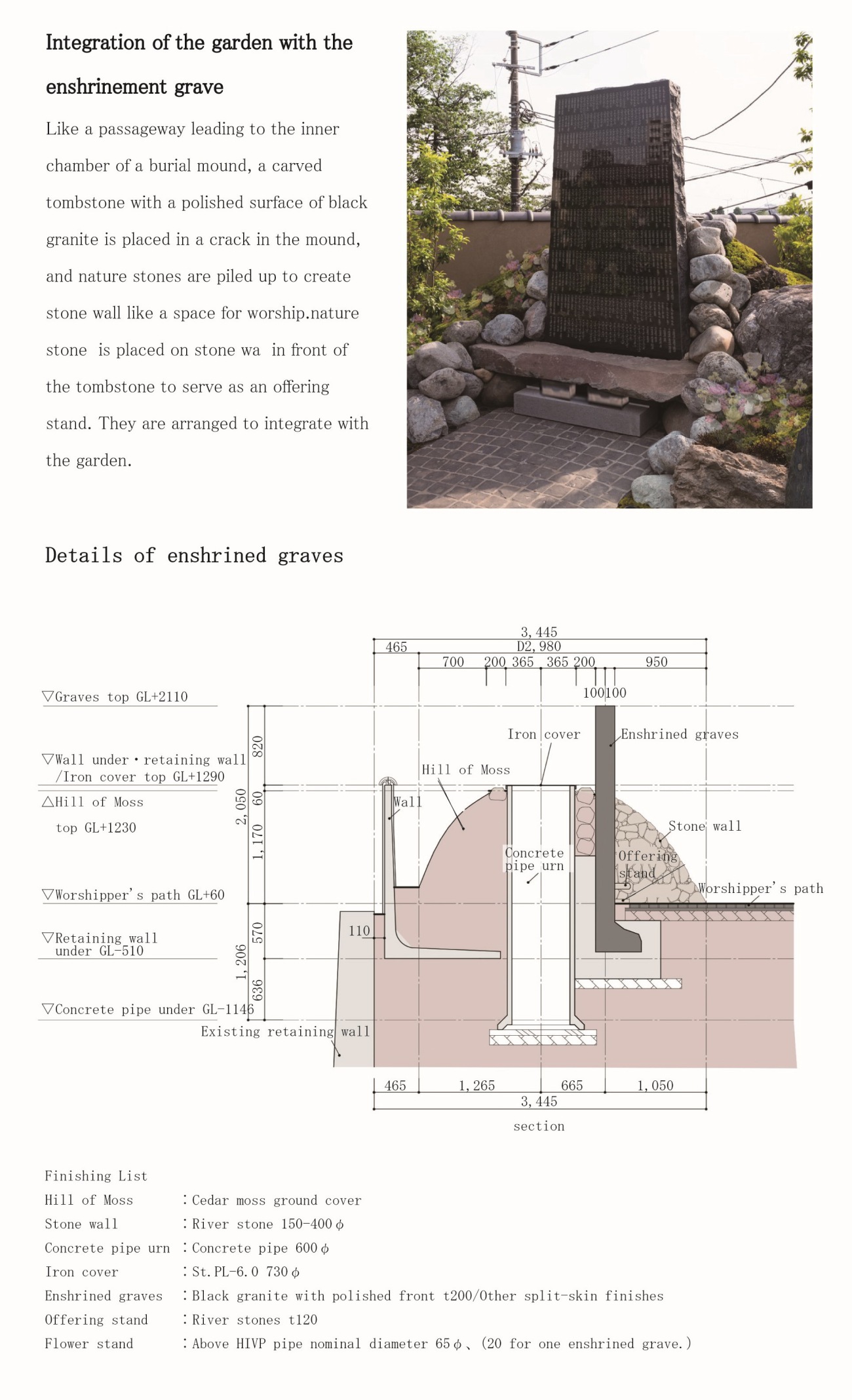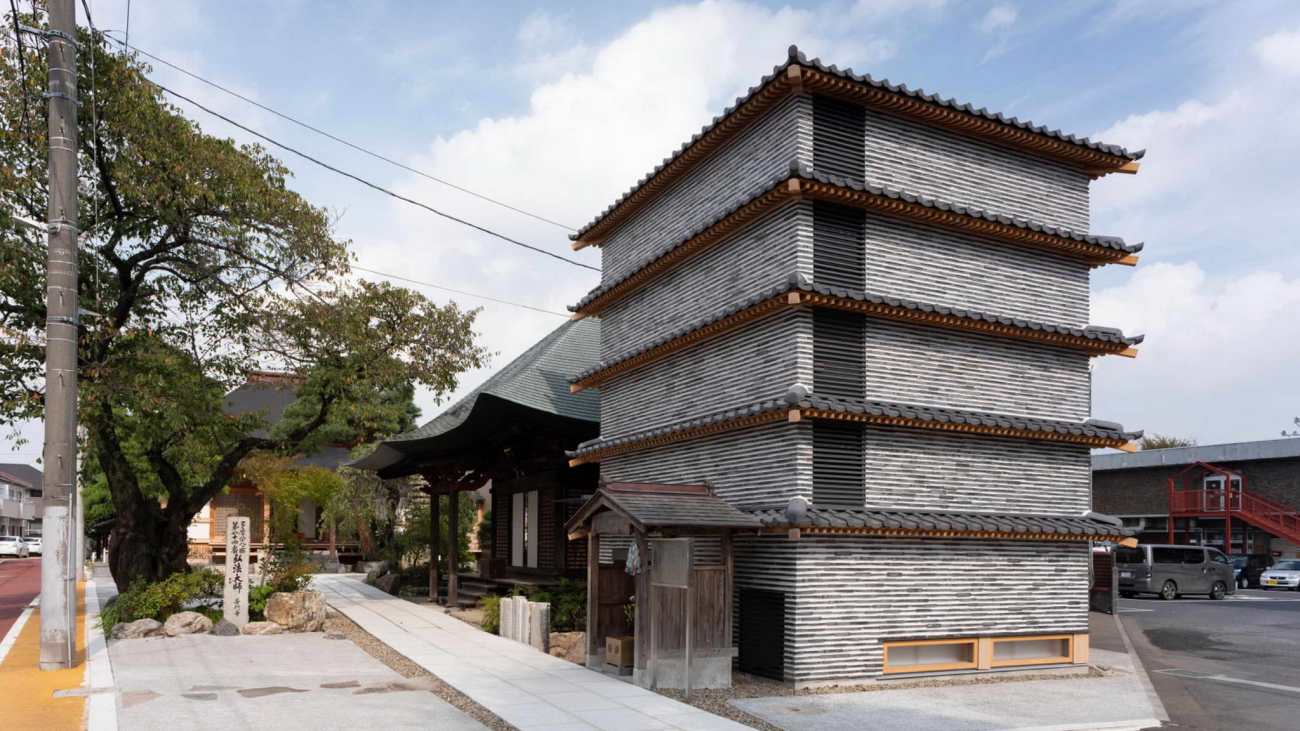| 公司: | LOVE ARCHITECTURE INC. | 类型: | 景观 |
|---|---|---|---|
| 地区: | 日本 | 标签: | 公墓 |
近年来,随着家庭形式的减少和多样化,出现了各种各样的墓葬形式,但很难找到比一组个体墓更令人印象深刻的形式。 "yoyo no niwa" 不仅响应家庭结构的变化,还通过将个体墓与供奉的墓地联系起来,回应了随着世代更替而发生的生命周期。
In recent years, as family forms have shrunk and diversified, various forms of graves have appeared, but it is difficult to find a more impressive form than a set of individual graves. The "yoyo no niwa" responds not only to changes in family structure but also to the cycle of life through generational change by linking individual graves with enshrined graves.
随着社会的变迁,对“追思服务场所”的需求不断增长。
As society changes, there is a growing demand for "Places for Memorial Services”
由于出生率下降、人口老龄化和生活方式的改变,到2021年,日本的平均家庭规模将减少到2.37人,单身户的比例将增至29.5%。由此导致家庭形式在日本变得多样化。家庭意识的焦点正在从祭祀祖先(已故者)转向夫妻和亲子关系(活着的人)。刻有“XX家族祖坟”并将遗骸放置在墓地的古老习俗是一种形式,在近百年的时间里变得普遍,这是由于自近代以来的法律改革和国家道德教育的结果。我们选择了根据每个时代的生活方式而定制的追思服务形式。近年来,基于血缘或血统的垂直继承的家族式墓地已经达到了极限,出现了各种形式的墓地,包括不需要继承人的永久追思服务的联合墓地、树葬服务和单身遗骨箱。这些形式是对祭祀祖先日益减弱和家庭规模缩小的回应,但它们只不过是个体的集合而已。
Due to the declining birthrate, aging population, and changing lifestyles, the average household size will decrease to 2.37 persons by 2021, and the percentage of single-person households will increase to 29.5%, as a result of which family forms are diversifying in Japan. The focus of family consciousness is shifting from ancestor worship = the dead to marital and parent-child relationships = the living. The ancient custom of inscribing "XX family ancestral grave" and placing the remains in the grave is a form that has spread in less than 100 years since it became common as a result of legal reforms and national moral education since the modern era. We have chosen the form of memorial service according to the lifestyle of each era. In recent years, family-based graves based on vertical succession by lineage or blood have reached their limits, and various forms of graves have emerged, including joint graves with perpetual memorial services that do not require heirs, tree burial services, and single-life ossuaries. These are forms that respond to the weakening of ancestor worship and the shrinking size of families, but they are no more than a collection of individuals.
一个集合墓地和花园的圆形日式花园墓地
Cemetery with a circular Japanese garden that integrates graves and gardens
“yoyo-no-niwa” 不仅仅是对家庭规模缩小和单身户增加的回应,还通过一个系统,允许在死者逝世33周年时将遗骸从个体墓葬转移到联合墓地,从而实现了父母与子女之间的世代更替,成为自然世界中生命周期的体现。此外,借鉴模拟自然的日式花园文化技术,如山川等,将四座墓葬安置在酷似山峰的苔藓之丘上,将116个个体墓葬布置在酷似山脚的苔藓平原上,以此体现自然界的景象。个体和供奉墓葬的墓碑、墓地标志和香炉采用天然石材制成,经过最少的人工处理,以确保每个墓葬的独特性。此外,墓碑被放置或堆叠,使其看起来好像它们原本就在那里,从而与花园的景观融为一体。这是个体性和整体性的融合。
每一座墓碑都融于花园,一切都与花园相关。
The "Yoyo-no-niwa" not only responds to the shrinking size of families and the increase in single-person households, but also functions as a cycle of life in the natural world through a system that allows the transfer of remains from individual graves to a joint grave on the 33rd anniversary of death, thus allowing the generational change between parents and children. In addition, using the technique of Japanese garden culture of imitating nature, such as mountains and rivers, four graves are placed on the Hill of Moss that resembles a mountain, and 116 individual graves are placed on the Plain of Moss that resembles the foot of a mountains, embodying the natural world. The headstones, cemetery markers, and incense burners for the individual and enshrinement graves are made of natural stone with minimal artificial processing to ensure the individuality of each grave. In addition, the gravestones are placed or stacked in a way that makes them appear as if they were originally there, thus integrating them with the landscape of the garden. This is the compatibility of individuality and wholeness.
Each headstone is mediated by the garden, and everything relates to the garden.
有机设计通过算法思维
Organic design by algorithmic thinking
“Yoyo-no-niwa” 是一座前所未有的墓地,配有一个类似旋转的房间式日式花园,宛如一幅干枯的景观。
两座联合墓葬位于苔藓之丘上,与花园外的两棵樱花树对齐,而园区外围的五座供奉墓葬则不可避免地以这两座联合墓葬为起点进行布置。仅由个体墓葬组成的苔藓平原的面积将自然地由中心的两三棵树木来确定。靠近苔藓之丘的苔藓平原的形状是通过在苔藓之丘和苔藓平原之间留出足够两人走过的1.2米宽的通道来自然确定的。其他苔藓平原区域的形状和布置是这样确定的,以确保在一条路径前方总会有另一个苔藓平原,这些平原会一个接一个地分叉。因此,每个苔藓平原都受到分叉路径和相邻苔藓平原的影响,没有两个是相同的。Y字形交叉路径的路面呈现出“Karesansui”砂纹样式,每个苔藓平原都位于其中心,呈波纹状扩展并互相抵消。这种有机设计是数学思维的产物,使游客能够在远处的山脉背景下体验穿越“Karesansui”花园的丰富序列。
The "Yoyo-no-niwa" is an unprecedented cemetery with a revolving chamber-style Japanese garden that resembles a dry landscape.
The two joint grave placed on the Hill of Moss aligned with the two cherry trees outside the garden, and the five enshrinement graves on the periphery are inevitably positioned with the two joint grave as a starting point. The area of a plain of moss consisting only of individual graves will naturally be determined by the number of trees to two or three in the center. shape the Plain of Moss near the Hill of Moss was naturally determined by placing a 1.2-meter wide pathway, wide enough for two people, between the Hill of Moss and the Plain of Moss. The shape and arrangement of the other the Plain of Moss areas were determined so that there would always be another the Plain of Moss in front of one path, which would branch off one after another. Thus, each Plain of Moss was determined by the influence of the branching pathways and neighboring Plain of Moss, and no two are alike. The pavement of the Y-intersection pathway resembles the "*Karesansui" sand pattern, with each the Plain of Moss at its center, spreading out like ripples and canceling each other out. The organic design, born of mathematical thinking, allows visitors to experience the rich sequence of strolling through the "*Karesansui" garden with the distant mountains in the background.
圣地的尊严和永恒
Dignity and permanence of the sanctuary
无论社会发生多大变革,“坟墓”——死者的灵魂与生者的灵魂通过某个地方或装置相遇的场所,都必须具备尊严和永恒性。在“Yoyo-no-niwa”中,唯一的天然石赋予了死者尊严,而个体和供奉墓葬的统一确保了生命在循环中的永恒存在。所有墓葬与整个花园的关系都类似于回归自然,非常适合作为圣地。
No matter how much society changes, the "graves," the place where the souls of the dead and the souls of the living meet through some place or device, must have dignity and permanence. In the "Yoyo-no-niwa" the one and only natural stone gives dignity to the dead, and the unity of the individual and enshrined graves ensures the permanence of life in circulation. The relationship between all the graves and the garden as a whole resembles a return to nature and is appropriate for a sanctuary.
* 枯山水
* Karesansui
枯山水是一种传统的日本庭园形式,利用石头、沙子、植物和地形来代表水流,尽管实际上没有水。
Traditional Japanese garden form using stones, sand, plants, and topography to represent the flow of water in the absence of water
▽位置平面,site plan.
▽总平面,plan design.
▽细节设计,detail design.
项目名称:府中市华藏院灵园“Yoyo-no-niwa”
公司名称: LOVE ARCHITECTURE INC.
网站:http://www.lovearchitecture.co.jp/
联系电子邮件:contact@lovearchitecture.co.jp
项目地点:日本东京府中市
竣工年份:2023
建筑面积(平方米):318.32㎡
生产商:Manaka,Ltd
图片来源:© 2023 西川正夫
Project name: Kezouin Fuchu-shi Cemetery "Yoyo-no-niwa"
Company name: LOVE ARCHITECTURE INC.
Website: http://www.lovearchitecture.co.jp/
Contact e-mail: contact@lovearchitecture.co.jp
Project location: Fuchu-shi, Tokyo, Japan
Completion Year: 2023
Building area (m²): 318.32㎡
Produce : Manaka,Ltd
Photo credits: © 2023 Masao Nishikawa
更新日期:2023-11-29 17:11:43
非常感谢 LOVE ARCHITECTURE INC. 带来的精彩项目, 查阅更多Appreciations towards LOVE ARCHITECTURE INC. for sharing wonderful work on hhlloo. Click to see more works!

